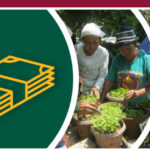Is small no longer beautiful?
Land distribution has been a major component of the agrarian reform program in the Philippines. Agricultural farms are divided and awarded to qualified farmers. After more than three decades, studies have shown the failure of agrarian reform beneficiaries (ARBs) to improve their productivity and income.
Are we at the cusp of shifting the policy regime in the Philippine agrarian reform? But why are we seeing this change? Studies have attributed the failure of ARBs to at least two factors. One is the resistance of some landlords and even some local government authorities to the national government’s implementation of agrarian reform. Another is the lack of sufficient support services for the beneficiaries.
The Economics of Rural Organization (EORO) framework of Hoff, Braverman, and Stiglitz suggests another factor, that is, the inverse relationship between farm size and yield. Various studies on farm sizes have confirmed the inverse relationship, especially in the case of small farms.
It is apparent in the analysis of the underperformance of ARBs that there has been no systematic effort to disentangle the effects of the inverse relationship, which if present, is for farm downsizing; and the effects of the two factors — insufficient support services and resistance from landlords and local authorities, which are against downsizing.
Therefore, invoking economies of scale (average costs goes down with increasing farm size) to support upsizing may in fact be an erroneous recommendation should the inverse relationship actually exist.
Is land consolidation in operations the way to go?
Interestingly, Director Blanquita R. Pantoja of the Community Innovations Studies Center (CISC), shared during the 32nd Sustainable Shared Growth (KKK32) webinar held on Feb. 19 that her proposal for upsizing is on “land consolidation in operations, not in ownerships.”
CISC is a unit under UPLB’s College of Public Affairs and Development (CPAf). It is the former Institute of Agrarian and Rurban Development Studies, which has been at the forefront of agrarian studies since it was created in 1998.
According to Dir. Pantoja, small farms could be integrated while maintaining individual ownerships. This is to avail of the economies of scale, more precisely support services (external economies of scale) that will enable farmers to be more productive. Certainly, this is a very much welcomed proposal that is both efficient and equitable.
I cited, however, one caveat. Crucial to the successful implementation of land consolidation in operations is that conduits of support services are in top condition.
However, Dir. Pantoja and other KKK32 speakers were extremely aware, through their experiences, that the major conduits – ARB organizations (ARBOs) including agricultural cooperatives and agrarian reform communities, could be ineffective in delivering the support services. A mad rush to this type of upsizing, therefore, could result in another three decades or so thrown down the drain.
Should we consolidate ownership or operations?
Thus, the question is: “how can we improve the capacities of conduits of support services?” This question really requires systematic study that could and should engage CPAf faculty, researchers, and graduate students, especially those concerned with community development.
It goes without saying that agricultural extension training, for example, should have memorable content. The training sessions should be appropriate to the needs and capabilities of participants for them to understand the lessons. Moreover, these activities should be attended by a wide circle of direct beneficiaries.
On the other hand, proposals do exist where land consolidation in ownership is claimed to improve farm efficiency. The evidence and logic of this proposal, especially with regard to efficiency and equity, should be studied very carefully.
It seems that farm upsizing, no matter how it is defined, must seriously question the premises on which it stands: (1) the absence of an inverse relationship between farm size and yield, in the case of land consolidation in ownerships, or (2) the existence of effective conduits of support services, in the case of land consolidation in operations.
Whether it is in the case of ownership or operations, the notion of farm upsizing as well as downsizing both aims to improve farm productivity or efficiency.
A meta-analysis of the literature, which was published in Nature Sustainability in 2021, concluded that small farms have higher yields and harbored greater crop and non-crop biodiversity than large farms. There was also little evidence for the differences in resource-use efficiency, greenhouse gas emission intensity, and profits between small and large farms.
So, what’s my take? Small farms could indeed be beautiful for they are efficient, equitable, and environmentally friendly or eko, as the Japanese would put it.
Dr. Maquito’s long stay in Japan has imbued in him an interest in sustainable shared growth, which he continues to pursue in terms of looking for concrete mechanisms that will help the country achieve this type of development.
First published by UPLB at https://horizon.uplb.edu.ph/uplb-features/are-small-farms-still-the-best-option-for-ph-agrarian/










